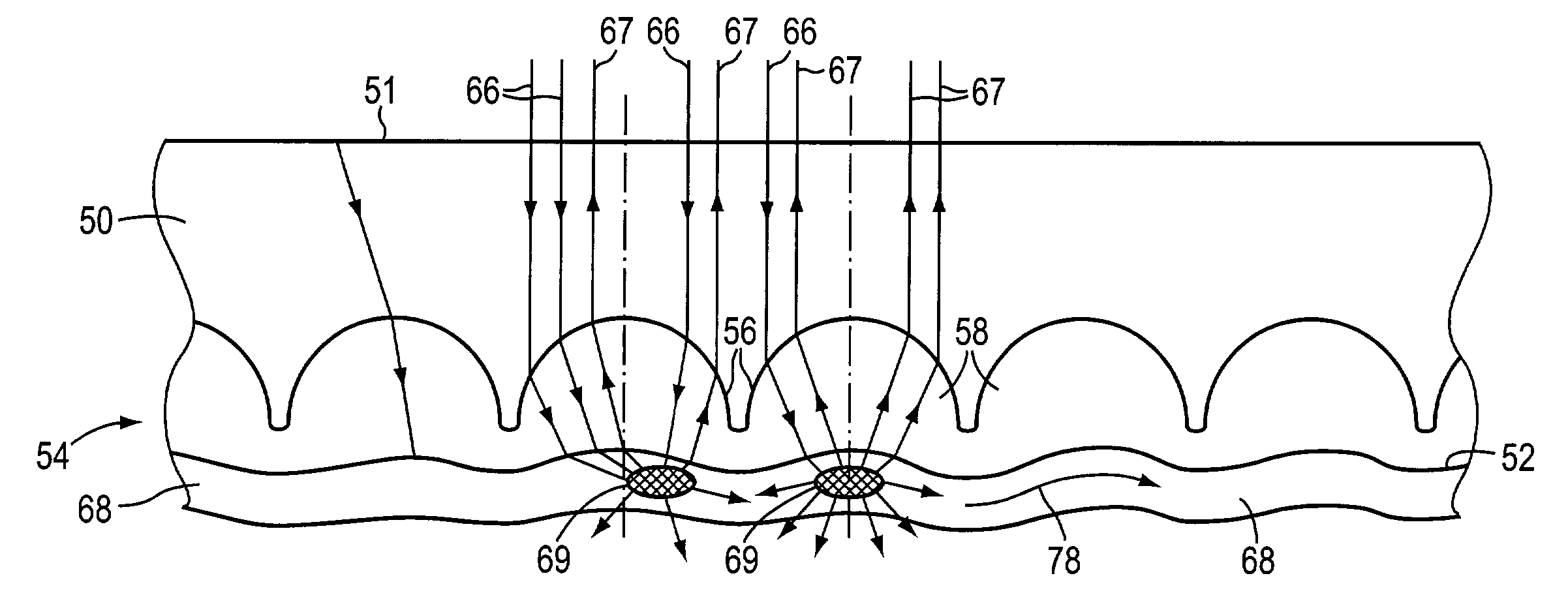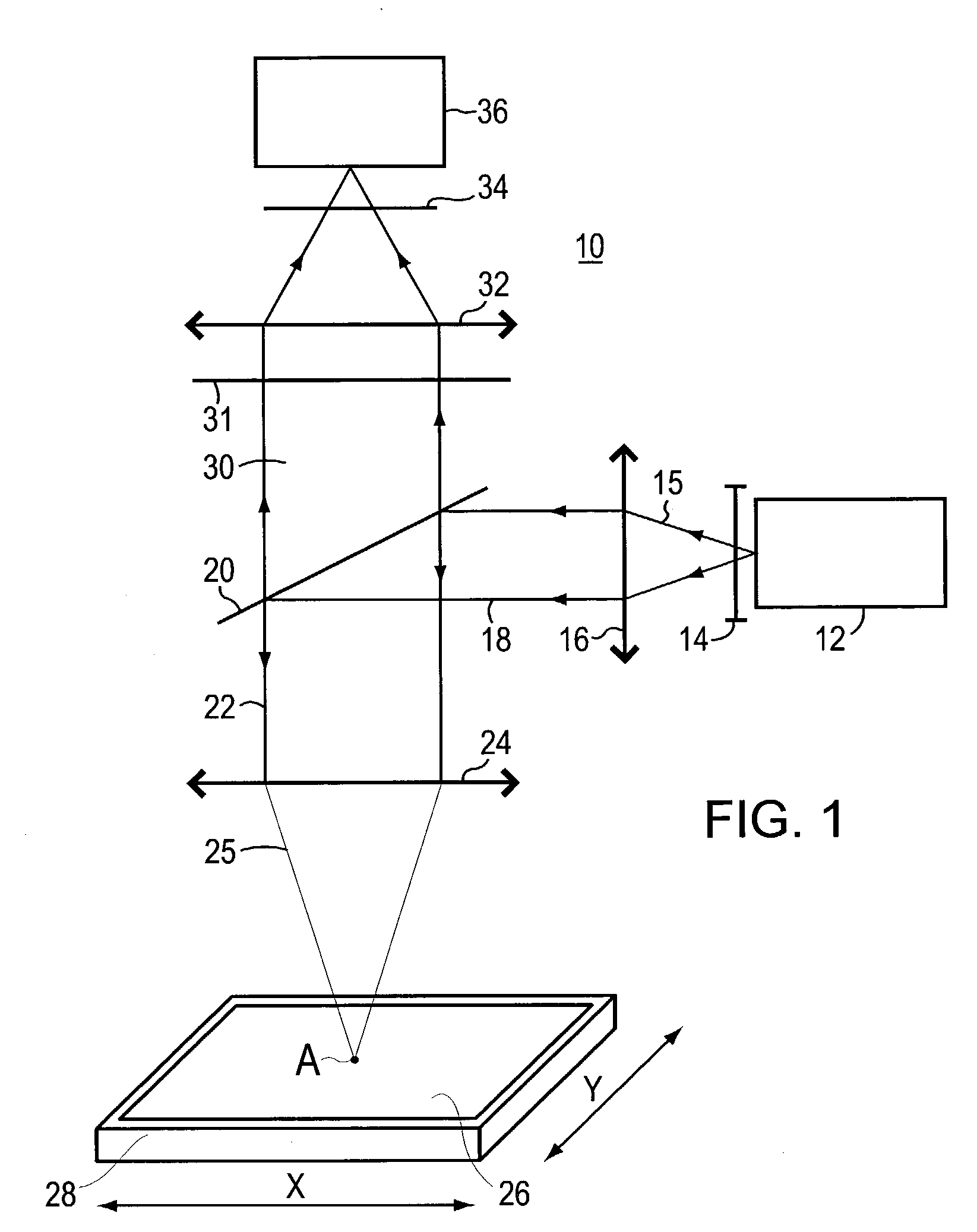Optically active substrates
a substrate and optically active technology, applied in the field of optical scanning or imaging, can solve the problems of high initial cost, relatively inefficient process of fluorescence microscopy, time and cost of associated labor, etc., and achieve the effect of high index of refraction
- Summary
- Abstract
- Description
- Claims
- Application Information
AI Technical Summary
Benefits of technology
Problems solved by technology
Method used
Image
Examples
Embodiment Construction
[0036]FIG. 1 illustrates one embodiment of a confocal optical scanning and imaging system for examination of biological material located on, or near, an optically active substrate shown in FIG. 3. The optically active substrate forms an important part of the optical system designed for increasing the signal-to-noise ratio of the detected optical signal.
[0037]Referring to FIG. 1, optical system 10 includes a light source 12, an entrance aperture 14, a lens 16, a dichroic mirror 20, an objective lens 24, a two or three axis translation table 28, a lens 32, an exit pinhole 34, a band pass filter or a rejection filter 31 and a detector 36. In the following embodiment, optical system 10 is arranged for the detection of fluorescent light; however, optical system 10 may also be arranged for the detection of scattered or transmitted light at the irradiation wavelength.
[0038]Light source 12 emits an excitation light beam 15, and dichroic mirror 20 directs the excitation light toward objectiv...
PUM
| Property | Measurement | Unit |
|---|---|---|
| thickness | aaaaa | aaaaa |
| radius | aaaaa | aaaaa |
| radius | aaaaa | aaaaa |
Abstract
Description
Claims
Application Information
 Login to View More
Login to View More - R&D
- Intellectual Property
- Life Sciences
- Materials
- Tech Scout
- Unparalleled Data Quality
- Higher Quality Content
- 60% Fewer Hallucinations
Browse by: Latest US Patents, China's latest patents, Technical Efficacy Thesaurus, Application Domain, Technology Topic, Popular Technical Reports.
© 2025 PatSnap. All rights reserved.Legal|Privacy policy|Modern Slavery Act Transparency Statement|Sitemap|About US| Contact US: help@patsnap.com



